Review: Full Count’s Modern Interpretation of Vintage Jeans
Full Count is an enormously esteemed denim company founded by Mikiharu Tsujita in 1992, and it’s so respected that it’s one of the Osaka 5, a group of older, ultra influential brands that includes Denime, Evisu, Warehouse & Co, and Studio D’artisan, which I’ve also reviewed.
The company is named, by the way, after the moment in baseball when you’ve got three balls and two strikes, right when you’re going to either strike out or get a hit. Tsujita, in an interview with Japanalogue, says that’s when you’re at your best, in “that charged moment when things are going to go one way or the other.”
Full Count is widely known for producing some of the finest modern interpretations of vintage jeans on Earth, with Tsujita trying cotton from Egypt, Switzerland, America, and Peru before becoming the very first Japanese brand to use Zimbabwe cotton.
It is said that this particular model, the 1110, is based on the vintage 502xx model. I just got it because it’s a slim tapered fit and my thick thighs only fit these sorts of models. (I had to size up; the waist is a bit loose but it gives me an excuse to wear my new Thursday belt.) Fit aside — which is something I don’t like talking about too much because everyone’s body is different — these jeans are, rest assured, a perfect example of the kind of quality you’ll get when you get your own pair of Full Count jeans. So let’s check out the denim.
[Further Reading: The Best Selvedge Denim: 8 Solid Brands]
[GET THE LOWEST PRICES ON THESE JEANS AT OKAYAMA DENIM HERE!]
Full Count Denim
- Full Count’s exclusive Original Japanese Selvedge Denim
- One wash
- 13.7 ounces
- Smooth, not slubby
- Made with hand picked Zimbabwe cotton
- Wash inside out and line dry in shade
It was about the mid 1990s when Tsujita said he was going “all in” on Full Count, they started making their thread from scratch, and he was truly satisfied with his denim’s quality. Today it’s made in Shinya Mills in Ibara (Tsujita was the first guy to make denim there) where 4 of the 70 looms are used by Full Count.
This denim is 13.7 ounces, which is what I’d call a perfect all-year weight. The jeans you see in these pictures I’ve been wearing for months around New York City and upstate, where I got them pretty muddy. (But I’m not ready to wash them just yet.)
Now, Full Count’s denim isn’t usually as rough and slubby as Americans tend to expect from Japanese jeans. While they have recently started making rougher denim, they’re really well known for this nice, soft Zimbabwe cotton.
Zimbabwe cotton is hand picked, which helps to improve the finish, and it’s long staple, so it resists pilling, breaking, and tearing. The main takeaway here is that Zimbabwe denim is soft yet durable, and it has a nice sheen to it.
[Learn more in my complete guide to Zimbabwe cotton]
So typically their denim isn’t very slubby, nor is it crazy thick — Full Count’s whole focus is vintage. In fact, these jeans are made on the very same vintage looms used to make Levi’s jeans a hundred years ago.

Full Count Jeans Details
- Levi’s-esque triangular stitch at top button
- Very light pink selvedge ID
- Goatskin leather patch
- Branded copper rivets
- Dual tone stitching
Both the denim and the details are pretty vintage, pretty simple. It’s not like my Samurai jeans that have Buddhist philosophy inscribed on their rivets and historic sword battles on the waistpatch, but I did want to point out a few cool features.
- As an homage to the original vintage Levi’s, these jeans have triangular stitching at top button.
- The selvedge ID is rope dyed a very light pink
- The waistpatch is made from extra crispy goatskin leather.
- The construction is enforced with copper rivets, including hidden rivets in back pockets that have the initials for Full Count & Co
- The button fly has four heavy duty branded buttons that are made to last.
- The 100% cotton stitching varies in color from deep orange to lighter yellow, making for nice contrasts, particularly on the belt loops and the yoke.
The cotton threads do have some downsides (more on that later), but they definitely fulfill the brand’s commitment to making jeans the way they used to — no fancy polyester threads here.
Full Count Jeans Price
I got these jeans at Blue in Green here in New York where I paid $305, but you can get them at Okayama Denim for $240. (I wasn’t super happy when I found out about the price discrepancy, but these are the sacrifices I make.)
When it comes to Japanese jeans, prices tend to follow those of top notch boots: $300 is acceptable for something high quality. At $240 I don’t hate the cost of Full Count, but it’s worth noting that the average pair of Japanese jeans is usually at least 15 ounces, which justifies a higher price. At 13.7 ounces for $240… it’s fair. I don’t love it, but I’ll take it.
Full Count Jeans Pros & Cons
To sum up:
Pros
- Zimbabwe cotton is great. It’s soft, it won’t pill, and it’s durable.
- Made with 100% cotton threads.
- Decent variety of fits.
- Good year-round weight
- They’re uncomplicated. The jeans are simple, smooth, and classic.
Cons
- They’re not as outrageously thick or slubby as Americans might expect from Japanese jeans.
- The stitching isn’t that tough.
This bears emphasis, as it’s my biggest gripe: there’s no shortage of loose threads on these jeans and while a lot of the time you can just snip them off and no harm, no foul, some of the stitching around the crotch has actually come loose.
This is where you learn that Full Count is traditional to a fault: they don’t use tougher polyester threads in the name of greater durability, they make everything as faithfully vintage as they possibly can. That makes for jeans that really do embody heritage in a way that the more, say, experimental jeans you get from Pure Blue Japan and Studio d’Artisan don’t. The fades aren’t as electric blue, the texture isn’t as rough and irregular, the name of the game with Full Count is vintage.
And for many guys, that’s the draw with heritage fashion. And if you want jeans with a ton of heritage, it’s hard to go past Full Count.



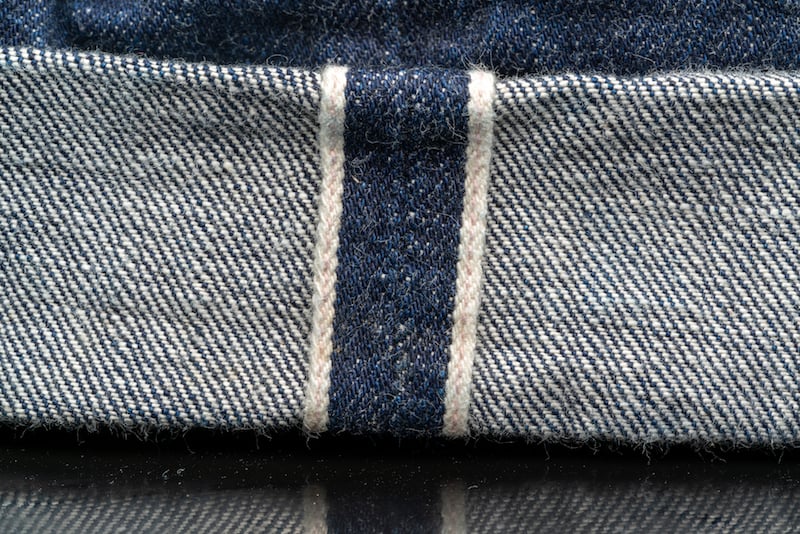
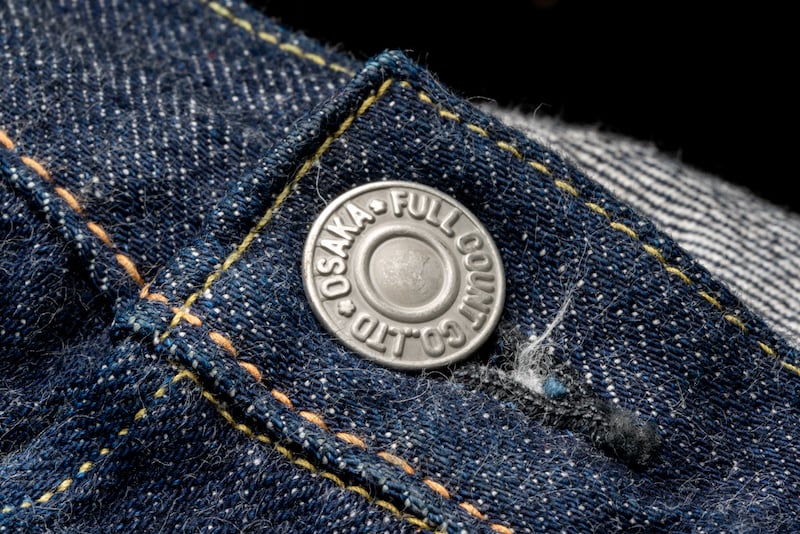

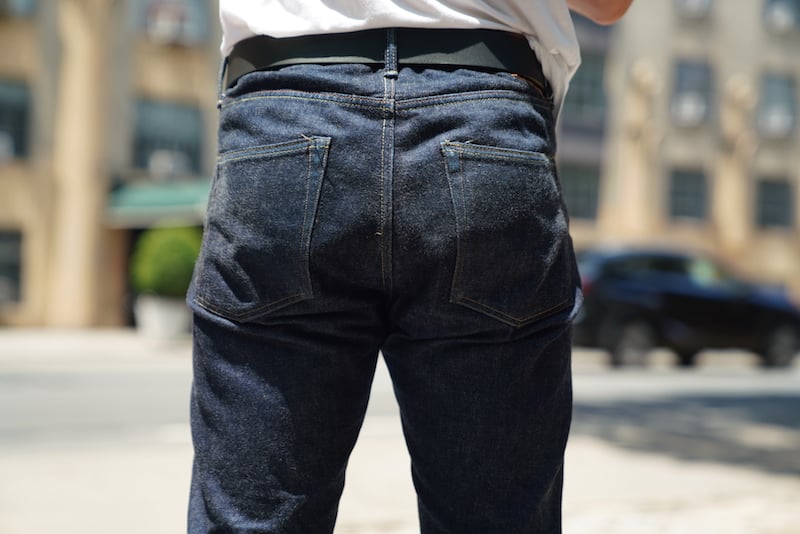

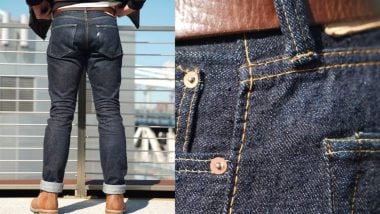

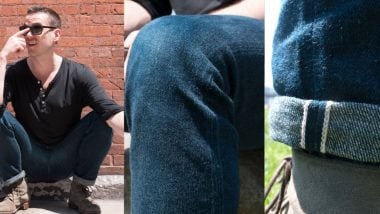





Join the Discussion